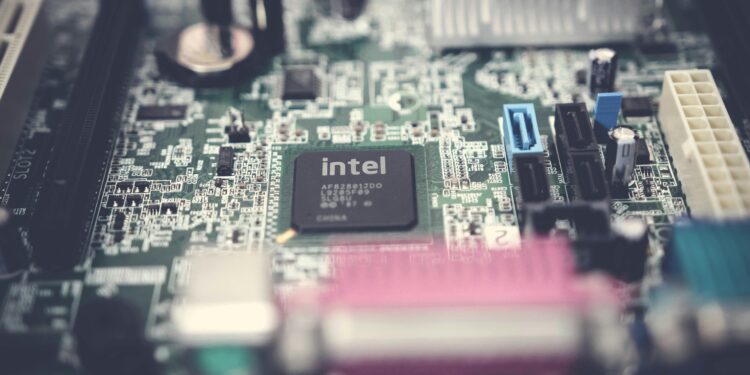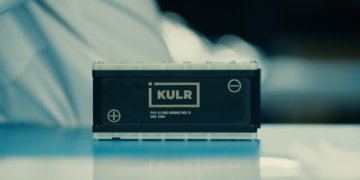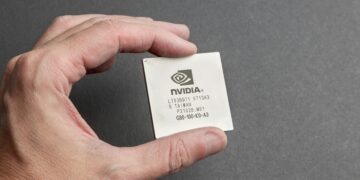Facing Stiff Competition in the AI Chip Race, Intel Sells Stake in Arm Holdings as Part of Broader Restructuring Efforts
In a strategic move that underscores the challenges facing one of the world’s most prominent chipmakers, Intel Corporation (INTC) has sold its 1.18 million share stake in British chip firm Arm Holdings. This divestment, disclosed in a recent regulatory filing, is part of Intel’s broader efforts to restructure its operations and cut costs as it battles to maintain its position in the fiercely competitive semiconductor industry.
A Financial Maneuver Amidst Turbulence
The sale of Intel’s stake in Arm Holdings is not just a routine financial transaction; it’s a reflection of the pressures Intel faces as it navigates through a period of significant financial strain and operational overhauls. The divestment likely netted Intel close to $147 million, based on Arm’s average stock price between April and June. This influx of cash is a welcome addition to Intel’s balance sheet, which, as of the end of June, showed $11.3 billion in cash and cash equivalents against $32 billion in liabilities.
The timing of this sale is telling. Intel’s financial health has been under scrutiny, particularly following the company’s disappointing quarterly results and the subsequent dramatic drop in its stock price—the largest single-day decline in over 50 years. This sharp fall was a stark indicator of investor concerns about Intel’s ability to keep pace with its competitors, especially as the race to develop advanced AI-focused chips heats up.
The Competitive Landscape: Intel vs. the World
Intel’s decision to sell its stake in Arm comes as the company grapples with increasing competition from both established players and new entrants in the semiconductor space. Companies like Advanced Micro Devices (AMD), Qualcomm, and Nvidia have been aggressively pushing into the AI chip market, a sector that is rapidly becoming the next battleground in the tech industry.
Nvidia, in particular, has set the pace with its AI-optimized chips, which have gained significant traction in the market. In contrast, Intel has been struggling to keep up, partly due to its ambitious but challenging efforts to expedite the production of its Core Ultra PC chips, designed to handle AI workloads. These efforts, while necessary to stay relevant in the AI boom, have come at a cost, contributing to the company’s recent financial losses.
Restructuring and Cost-Cutting: A New Chapter for Intel
The sale of the Arm stake is also closely aligned with Intel’s broader restructuring initiatives, as outlined by CEO Pat Gelsinger. Described as “the most substantial restructuring of Intel since the memory microprocessor transition four decades ago,” these efforts include a $10 billion cost-reduction plan announced in early August. This plan is expected to result in the elimination of approximately 15,000 jobs, a reduction in capital expenditures, and the elimination of Intel’s fiscal fourth-quarter dividend—a move that reflects the depth of the company’s current challenges.
Gelsinger’s strategy is not just about cutting costs; it’s also about refocusing Intel’s efforts on areas where the company can regain its competitive edge. One such area is Intel’s chip foundry business, which has been struggling to keep up with the likes of Taiwan Semiconductor Manufacturing Company (TSMC) and Samsung. Both TSMC and Samsung have established themselves as dominant players in the global semiconductor manufacturing space, leaving Intel with the daunting task of clawing back market share.
Arm Holdings: A Bright Spot in the Market
While Intel has been grappling with its own challenges, Arm Holdings has been experiencing a period of growth, particularly since its initial public offering (IPO) in September last year. Arm’s shares have surged nearly 65% year to date, bolstered by strong demand for its chip designs, which are widely used in mobile devices, data centers, and increasingly in AI applications. This growth has been a boon for Japan’s SoftBank Group, which holds a majority stake in Arm and has benefited from the rise in the company’s stock price.
The contrast between Intel and Arm’s recent fortunes highlights the shifting dynamics in the semiconductor industry. Arm’s success is indicative of the growing importance of specialized chip designs that can power next-generation technologies, including AI, 5G, and the Internet of Things (IoT). For Intel, the decision to divest from Arm could be seen as a necessary step to streamline its operations and focus on areas where it can more effectively compete.
Looking Ahead: What’s Next for Intel?
As Intel moves forward with its restructuring and cost-cutting plans, the company’s future remains uncertain. The challenges it faces are significant, from regaining lost ground in the AI chip race to revitalizing its chip foundry business. However, under the leadership of Pat Gelsinger, Intel is making bold moves to adapt to the rapidly changing landscape.
The sale of its stake in Arm Holdings is just one piece of the puzzle. How Intel manages its ongoing transformation will be critical in determining whether it can reassert itself as a leader in the semiconductor industry or continue to struggle in the face of mounting competition. Investors and industry watchers will be closely monitoring Intel’s progress in the coming months, as the company seeks to navigate through what may be one of the most challenging periods in its history.
You might like this article:A Tale of Two Chains: Starbucks’ Leadership Shakeup Sends Shockwaves Through Chipotle











